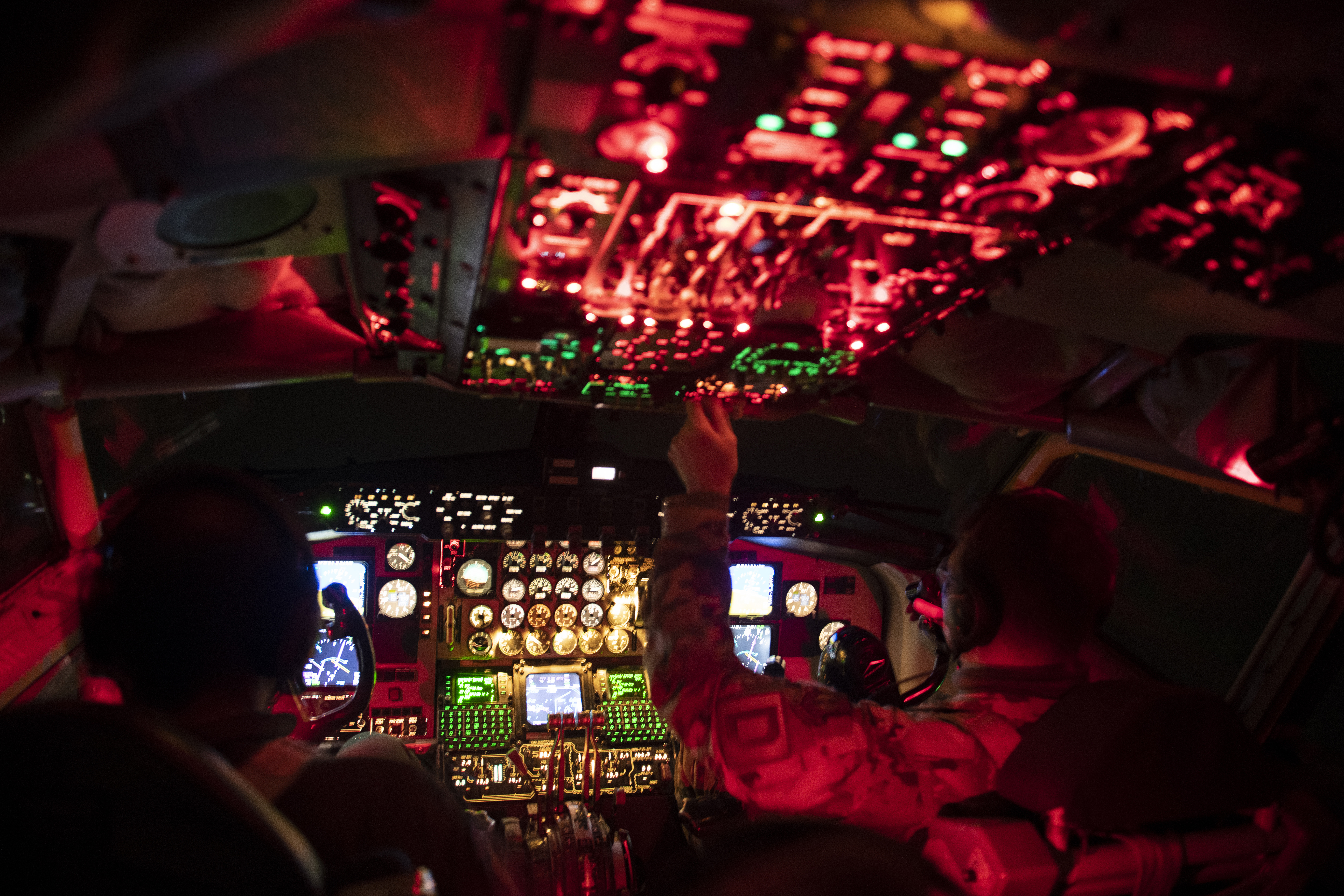U.S. Air Forces in Europe last week wrapped its Advanced Battle Management System demonstration, bringing together dozens of aircraft from U.S. military services and multiple countries to find new ways to share data and operate together.
The USAFE “on ramp” demonstration was the first to have non-U.S. military participants, with the Royal Netherlands Air Force, Polish Air Force, and United Kingdom Royal Air Force flying. It was also the first ABMS event to occur after Congress limited some of the funding in the fiscal 2021 National Defense Authorization Act.
USAFE boss Gen. Jeffrey L. Harrigian told reporters during the Air Force Association’s virtual Aerospace Warfare Symposium that budget restrictions had “minimal impacts,” because the command added some of its own funding “because I thought it was important enough to contribute to this while we worked with the team back in the Pentagon to find ways to get to where we needed to go.”
For the event, the large airborne scenario focused on F-15Cs and F-15Es from RAF Lakenheath, United Kingdom, practicing the employment of the AGM-158 Joint Air-to-Surface Standoff Missiles over the Baltic Sea, using targeting and command and control through U.S. and United Kingdom assets, according to a USAFE release. These included the 603rd Air Operations Center and the Deployable Ground System, along with U.S. Navy P-8, KC-135s from RAF Mildenhall, and a USAF C-17.
Simultaneously at Ramstein Air Base, Germany, USAF assets and Dutch F-35s participated in a mission aimed at base defense. This included joint and combined teams targeting unmanned aerial systems and simulated cruise missile attacks. The F-35s served as a communication link between the defense and the U.S. Army’s 10th Army Air Missile Defense Command, according to the release.
The U.S. Space Force helped with a Multiband Assessment of the Communication Environment from the 16th Space Control Squadron. Harrigian said the exercise included SpaceX’s Starlink broadband system.
Additionally, the 341st Missile Wing at Malmstrom Air Force Base, Mont., helped with communication. Kessel Run with the Air Force Life Cycle Management Center’s Detachment 12 also supported the event.
“There were minimal impacts from a budget perspective in terms of what we wanted to do, we were able to execute both the find, fix, and target piece of the demo and do our base defense, as well,” Harrigian said.
The event took about eight months to plan, Harrigian said. Through the demonstration, USAFE expected to see “foundational improvements on some of our infrastructure. I had expected to see an improvement on some of the tools that we were putting in the hands of our Airmen. And then, ultimately, to see how we holistically pulled this all together, to continue connecting different sensors,” he said.
This is the fourth in the series of ABMS onramps, which focus on testing and developing new technologies to link sensors and shooters. The effort started out as a way to replace the service’s aging E-8C Joint STARS and has morphed into a massive new look at how the service can communicate and target across aircraft and other joint assets.
